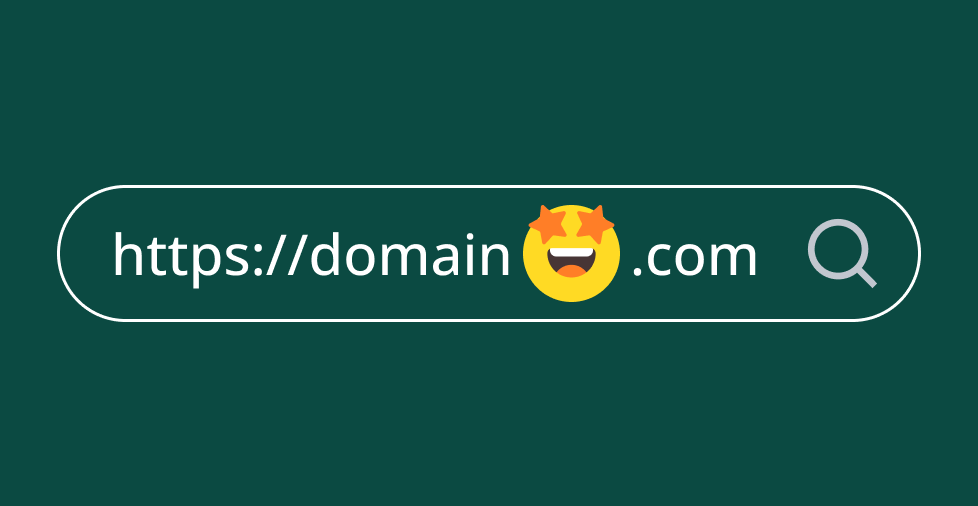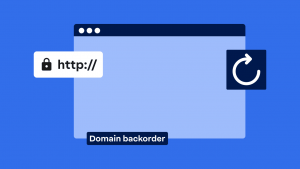Key takeaways:
- Emoji domains are fun, eye-catching, and useful for branding like in social media, short-term campaigns, or when targeting younger audiences.
- They rely on Punycode and Unicode to work behind the scenes, since emojis are non-ASCII characters that browsers and DNS need to translate using international coding standards.
- Emoji domains come with limitations like SEO challenges, browser inconsistencies, and legal risks, so they’re best used alongside a traditional domain for full functionality and visibility.
You’ve probably used emojis in texts, tweets, and captions but what about in a website address? Yep, it’s possible to create URLs with emojis in them, and some brands are already using them to stand out online.
In this guide, we’ll walk you through what emoji URLs are, which domain extensions support them, how to register one through Network Solutions, and whether they’re the right fit for your brand.
What are emoji domains?
Emoji domains are web addresses that use emojis instead of (or alongside) letters and numbers. For example, instead of typing coffeeshop.com, you could register something like ☕.ws, a short, visual twist on a traditional domain.
But emojis can’t be processed by the internet in their original form. That’s where Punycode comes in. Punycode is a special type of encoding that converts emojis into a format browsers and domain name systems (DNS) can understand.
So, while you’ll see something like ☕.ws, the actual registered domain looks more like xn--53h.ws behind the scenes. Don’t worry, you don’t have to memorize this. Most emoji domain tools do the conversion for you.
There are two main ways to use emojis in a domain:
- Full emoji domains, where the emoji is the entire domain name (like 🍕.to)
- Emoji subdomains, where the emoji comes before your main domain (like 🌈.yourbrand.com)
Both options offer creative freedom, but they come with different setup steps and compatibility quirks, which we’ll cover next.
Which domains support emoji URLs?
Not all domain extensions (also called TLDs, or top-level domains) allow emojis. For example, common extensions like .com, .org, and .net do not support emoji characters.
Instead, emoji domains are usually registered through country-code TLDs (ccTLDs)—these are domain extensions assigned to specific countries, but many are open for global use.
Here are a few TLDs that currently support emoji domains:
| TLD | Country Code | Emoji Support? |
| .ws | Samoa | Yes |
| .to | Tonga | Yes |
| .fm | Micronesia | Yes |
| .ml | Mali | Yes |
| .cf | Central African Republic | Yes |
| .ga | Gabon | Yes |
| .gq | Equatorial Guinea | Yes |
| .tk | Tokelau | Yes |
| .st | São Tomé and Príncipe | Yes |
| .kz | Kazakhstan | Limited |
| .uz | Uzbekistan | Limited |
While these ccTLDs are managed by different registrars globally, many are available for registration through platforms that support custom domain configurations.
Keep in mind: emoji compatibility also depends on the registrar, browser, and how the emoji is rendered across devices.
Where can emojis appear in a domain name?
You can use emojis in domain names but where they show up matters. Emojis work well in subdomains, like this: 🍕.yourbrand.com. This setup keeps your main domain intact while adding a creative flair to your links. It’s great for landing pages, promotions, or sharing links on social media.
If you’re using a TLD that supports emojis like .ws or .to, you can register full emoji domains such as 🌮🌶️.ws. These are shorter and more direct but may come with compatibility limitations.
You might run into things like:
- Some browsers and platforms displaying the Punycode version instead of the emoji itself.
- Emoji rendering that varies depending on device, operating system, and font.
- Some forms, analytics tools, and emails that reject or misread emoji domains altogether.
Because of these issues, many brands use emoji URLs for social and mobile campaigns, while keeping a traditional domain for their main website or SEO efforts.
Benefits of using emoji in URLs for small businesses and brands
Emoji domains serve real branding purposes when used strategically. Here’s what makes them appealing:
- Boosts engagement and memorability
- Showcases brand personality
- Appeals to younger and social media–savvy audiences
- Great for short-term campaigns and promotions
Boosts engagement and memorability
Emojis catch the eye, especially on social media feeds or chat apps. A unique domain like 🔥.ws is more likely to be noticed and remembered than a plain URL.
Showcases brand personality
Emojis help express your brand vibe without saying a word. A bakery might use 🧁, while a travel blog might go for ✈️, because it’s instant visual branding.
Appeals to younger and social media–savvy audiences
If your target market includes Gen Z or millennials, emoji URLs fit naturally into their online habits. They’re already using emojis daily, why not meet them there?
Great for short-term campaigns and promotions
Emoji URLs work especially well for product launches, limited-time offers, or social media ads. They’re fun, shareable, and ideal for short bursts of traffic.
Emoji domains are best used as part of your larger domain strategy, not always as your primary website. More on that in a bit.
Risks of emoji domains and how to mitigate them
Emoji domains offer creativity and visibility but they’re not without downsides. Here are some of the common issues to consider:
- Limited domain support
- Display inconsistencies
- SEO and indexing limitations
- Security concerns
Limited domain support
Only a small number of domain extensions allow emojis. Popular TLDs like .com, .org, and .net don’t support them, which limits where you can register your emoji URL. To avoid running into dead ends, research emoji-compatible TLDs ahead of time and use a domain registrar that clearly supports non-ASCII characters.
Display inconsistencies
Not all devices or browsers render emojis the same way. What looks great on an iPhone might show up as a blank box or a different symbol on another device. This could affect how your domain appears to users.
If you want a consistent experience, test your emoji domain on multiple platforms and choose emojis that have a stable design history across systems.
SEO and indexing limitations
Search engines like Google don’t treat emoji domains the same way they do standard ones. While they might boost click-through rates on social platforms, they may not perform well in organic search or backlink tracking.
If SEO is a priority, use your emoji domain for campaign links or social media sharing, but keep a traditional domain as your main website for better search visibility and tracking.
Security concerns
Emoji domains can open the door to spoofing or phishing. Since some emojis look very similar, a malicious actor could register a nearly identical domain to fool users. These homoglyph risks make security a top priority.
To reduce this threat, register your domain through a trusted registrar like Network Solutions, enable SSL, and avoid emojis that are easily confused with others.
Legal and trademark considerations for emoji URLs
Before locking in your emoji domain, it’s smart to understand the legal side, especially if you’re using it for business or branding.
In some cases, you can trademark an emoji domain, though you can’t trademark the emoji itself (since it’s part of a universal character set). However, if your full domain name is distinctive enough and meets your country’s trademark requirements, it may be eligible for protection.
That said, domain squatting is something to watch out for. Emoji domains are still relatively new, which means someone else might grab an emoji combination related to your brand. This can lead to disputes or lost traffic.
If you’re thinking of using an emoji domain as part of your brand identity, there are a few smart precautions you can take to minimize legal risks:
- Do a trademark search before registering your emoji domain.
- Avoid using emojis that resemble registered logos or characters.
- Use a reputable registrar (like Network Solutions) that can offer domain protection services.
- Consulting with a legal professional to ensure you’re fully covered.
How to register an emoji domain with Network Solutions: Step-by-step guide
Getting an emoji domain might sound technical, but it’s a pretty easy process with the right tools. Here’s how to do it with Network Solutions:
1. Pick your emoji and domain extension
Choose the emoji (or emoji combo) you want to use, and pair it with a supported TLD like .ws or .to. Make sure it fits your brand and displays well across devices.
2. Convert it to Punycode
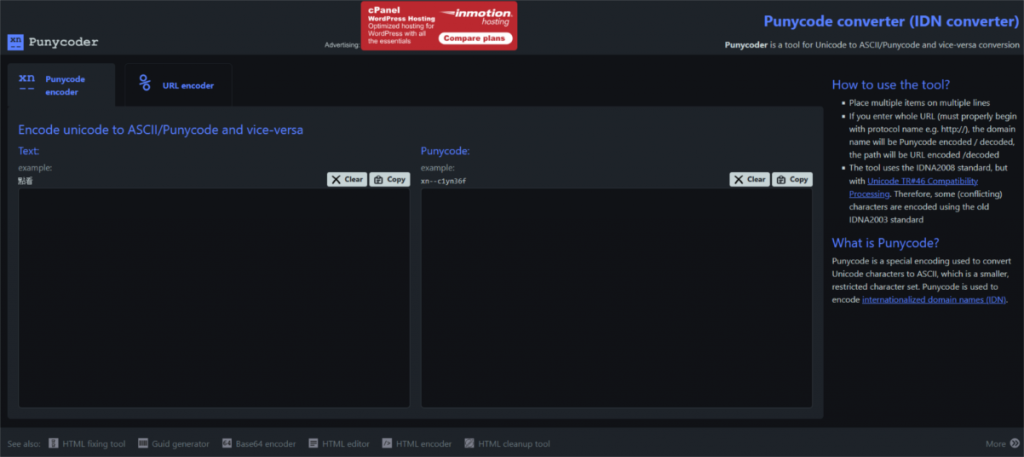
Since the internet doesn’t process emojis directly, you’ll need to convert your emoji URL to Punycode a text-based version that web servers can understand.
Use a free online converter like Punycoder.com to get your encoded domain (e.g., 🍕.ws becomes xn--vi8h.ws).
3. Search for availability on Network Solutions
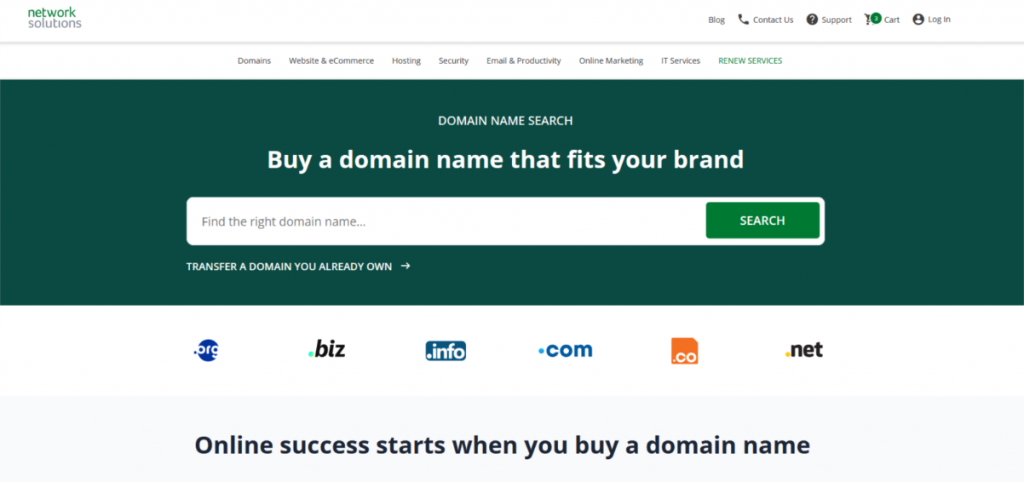
Head to Network Solutions and enter the Punycode version of your domain in the search bar. If it’s available, you’re good to go.
4. Register and secure your domain
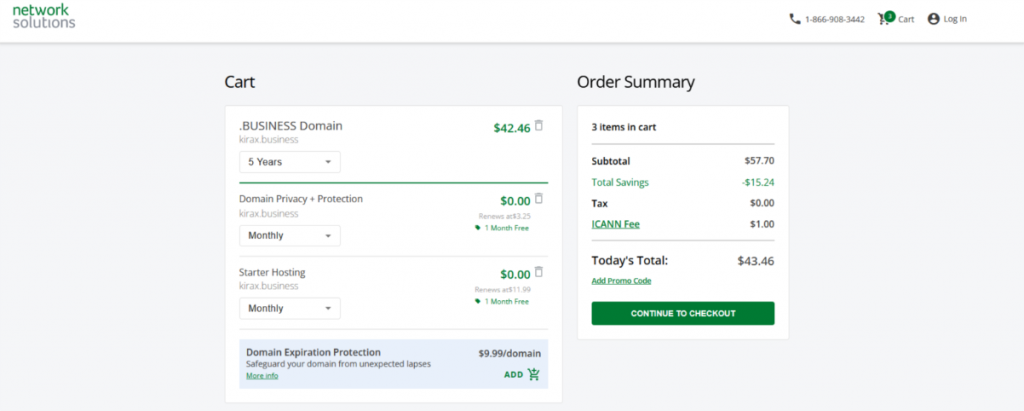
Once you’ve confirmed availability:
- Choose your registration term (up to 5 years)*.
- Add domain privacy protection to hide personal info.
- Consider SSL and security features to protect your site.
Note: Prices depend on the TLD and domain availability. Please check our site for current pricing.
5. Test your new emoji URL
Open your browser, type in the emoji domain, and make sure it redirects to your intended website. If needed, set up redirects or link it to your existing site via DNS settings.
Network Solutions makes it easy to manage, renew, and secure your emoji domains through its domain management dashboard.
Technical considerations when using emoji in URLs
Emoji domains are fun but under the hood, they come with a few quirks. Here’s how to handle common technical issues:
Encoding and rendering issues
Emojis need to be converted into Punycode to work online. Always double-check that your converted domain matches the emoji you want, especially if you’re using multiple emojis in a row.
Browser inconsistencies
Not every browser displays emojis the same way. For example:
- Safari tends to support emoji domains well.
- Chrome and Firefox might show the Punycode version in the address bar.
- Always test across browsers and devices to ensure a consistent experience.
Server and database compatibility
Some older systems may reject or misread emoji characters, especially when logging URLs or sending emails. Make sure your hosting provider can support internationalized domain names (IDNs).
Redirect setup
Want to use your emoji URL as a fun link but still rely on your main domain for business? Set up a 301 redirect from your emoji domain to your main website. That way, you keep the branding benefits without losing traffic or analytics.
Fallbacks and backups
Keep a standard version of your domain handy. If a platform doesn’t support emoji URLs or a device renders them weirdly, you’ll still have a reliable backup.
Get your own emoji domain with Network Solutions
Emoji domains are a fun way to boost engagement and give your brand a unique twist, perfect for social campaigns or playful branding. Just keep in mind they have limitations, so it’s best to use them alongside a traditional domain.
To get started, choose your emoji and a supported TLD, convert it to Punycode, and secure it through Network Solutions. You’ll get simple tools to register and manage your new domain all in one place.
Frequently asked questions
No, you can’t put emojis in a .com domain. The emoji domain system only works with certain country-code extensions that allow non-ASCII characters. Since most generic TLDs don’t support emoji in URLs, you’ll need to choose a supported extension if you want to register an emoji URL.
Some browsers and platforms display the domain in Punycode instead of showing the emoji. This happens because emojis are special characters encoded using an international coding standard called Unicode.
Punycode translates emojis and other non-ASCII characters into a format the Domain Name System can understand. It’s a key part of emoji domain registration and ensures compatibility across browsers.
Just type your emoji using an emoji keyboard, pair it with a supported TLD, and convert it to Punycode. Then, check availability and register it with a domain registrar like Network Solutions.
Not usually. Emoji domain registration costs are often similar to normal domain names, typically $10 to $50 per year, depending on the registrar and emoji used.
Yes, but make sure your platform supports IDNs. If not, the emoji URL may show up in its Punycode form. Always preview how your emoji in URL appears before you post.
Not directly. While emoji domains may improve clicks on social media, emoji in URLs aren’t ideal for indexing or backlinks. They’re better for branding than core SEO.
